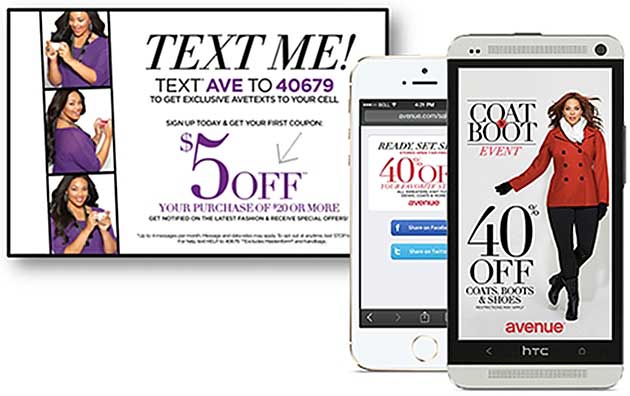What do consumers want? Mobile content!
When do they want it? Now!
Consumers have made a dramatic shift toward mobile, and it's time for marketers to start making plans for mobile campaigns as well as permanently adding mobile to their marketing toolkits. Marketers should focus particular attention on mobile messaging, because sending and receiving messages is the top mobile activity across all demographics.
Mobile messaging presents a wealth of opportunities to effectively reach target audiences. And mobile messaging campaigns are easier than you think. In fact, implementing a mobile messaging campaign can be summarized in three steps.
The following insights will assist marketers with incorporating mobile messaging into an existing campaign.
Step 1: Identify the audience, goals, and strategy
Before getting started with any type of campaign, it's crucial to completely understand the target audience. Marketers should carefully consider who the audience members are as individuals, their media consumption, preferences, shopping habits, etc.—and, most important—whether it make sense to reach this audience via mobile.
If possible, marketers should also look into discovering the type of devices audiences own; knowing that could potentially help marketers better customize the mobile content to deliver a better user experience.
In addition to understanding the audience, brands also need to define the goals and strategies of the overall campaign. What do you want to achieve and how will you achieve it? When adding mobile to an existing program, the same consideration should be given directly to the mobile part of the campaign. Marketers should specify the goal mobile is going to achieve and how that will be accomplished as mobile contributes to the overarching vision of the campaign.
Example: Let's say that HJ, a women's clothing retailer providing the latest fashions, wants to drive purchase in-store traffic during the summer months. The plan is to deploy a multichannel campaign that will integrate direct mail, email, in-store signage, mobile, and social media. In the grand scheme of things, mobile will mirror the email and direct mail efforts, and its role will consist of generating in-store opt-ins as well as maintaining continual customer engagement by delivering in-store offers, news, and events.

Step 2: Plan and execute
The next step is to employ the insights gained from the target audience's behavior as well as the defined goals and strategies. Those insights guide the process of putting together the mobile piece of the program: identifying the opt-in process, creating a clear call to action, selecting the content, and configuring the details of how all this will integrate with the other elements of the campaign (email, social media, etc.).
When determining the details of the content, marketers should consider using content that will provide the most value to users while also achieving the set objectives. The content needs to be engaging, optimized for mobile, and aligned with the look and feel of the campaign to ensure consistent branding.
Example: For its campaign, HJ decides to promote opt-ins for the campaign on store signage, social media, direct mail pieces, and in emailings. Using phrases such as "Text HJ 12345 to receive exclusive summer offers and updates," the retailer sets the expectation that the promise of deals will give shoppers the incentive to join the program. Alternatively, for those shoppers who may not wish to opt in via mobile, HJ would also provide an email or direct mail signup.
To ensure branding consistency throughout the elements of the campaign, HJ uses the same, though adapted, creative assets for the direct mail pieces, emails, and social media profile images. Using a platform like Rich Media Messaging (RMM), which allows brands to send rich content such as images, video, and long text to virtually any device, HJ can also send the campaign imagery via mobile instead of plain SMS. As RMM has a 35% redemption rate compared to SMS' 16%, HJ can anticipate positive campaign results.
Step 3: Track results and optimize
Once the campaign is up and running, let the tracking begin. In the beginning of the process of detailing the campaign, marketers should already have outlined the metrics of success that they will track against.
When reviewing the analytics, always check for anomalies and patterns that stand out. A careful analysis of the data could reveal which offers were redeemed the most, the least, or not at all. The insights derived will help to guide future campaigns, facilitating the ability to capitalize on the high-performing elements from previous campaigns.
Here's the bottom line
As mobile continues to grow, marketers are becoming more eager to dive in. Mobile shouldn't be viewed as separate from the overall customer journey; rather, it's an integral part of that journey.
With its ability to be easily incorporated into an already existing marketing program, mobile is the most personal touchpoint via which marketers can effectively reach target audiences and drive a two-way, brand-initiated conversation
Mobile messaging helps to carry the brand-initiated conversation. As a perfect fit to your push/pull strategy toolkit, mobile messaging has the power to push customers through the purchase path to complete the sale. Moreover, mobile messaging can guide customers through other brand experiences, such as apps, mobile websites, and other mobile touchpoints.
Brands that are investing in mobile messaging campaigns understand the value of mobile as it presents them with a bevy of opportunities.
The following list highlights some of the key components to consider for your next mobile campaign:
- Specified goals and strategy
- Understand the target audience
- Ensure the campaign has a clear call to action
- Optimize the content to fit mobile
- Maintain consistent branding
- Define parameters of success




